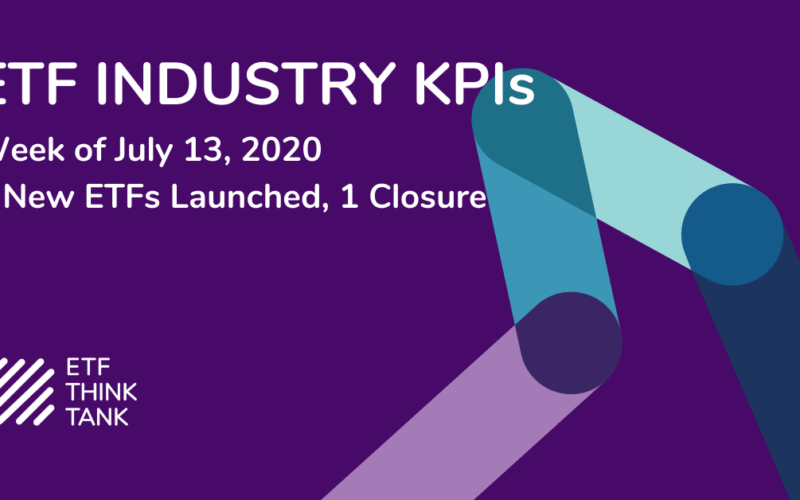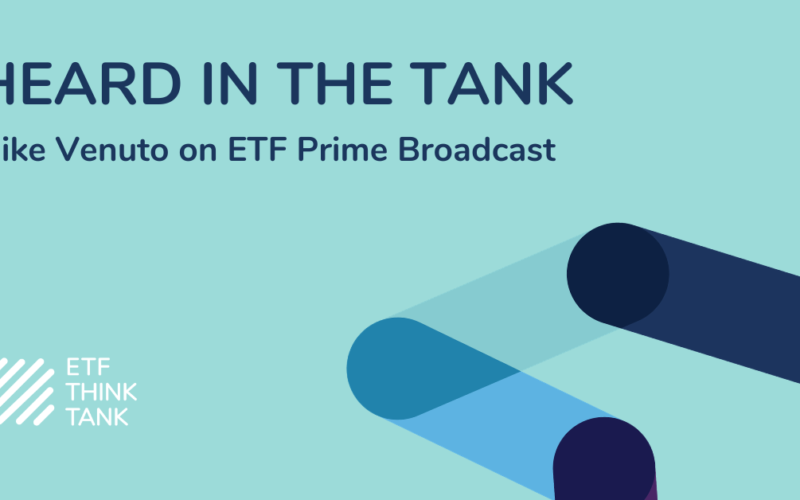ETNs Are Shrinking
As the “ETF Professor,” I have often struggled with why ETP investors own Exchange Traded Notes (ETNs). My skepticism was documented in 2014 when I sat down with Kathleen Moriarty to discuss the differences between ETP structures. The tone of the interview is purely educational, but to me, the differences that are mentioned clearly mark that investors should view the ETN structure as inferior to the ETF wrapper (interview link). Most importantly, as per the July 12, 2020 ETF Think Tank data, it is clear that ETNs, the original “Non-Transparent ETFs,” are shrinking:

- The number of ETNs now stands at 136, down 21% from a peak of 172 at 12/31/19 when AUM was at $18.6 billion. The 136 ETNs still outstanding represent $7.5 billion in investor AUM, down about 40% from their peak.
- A good portion of this investor money has been delisted by sponsors, and many ETNs now trade like closed-end funds more than ETFs. This means they no longer trade on major exchanges, will have meaningful tracking error, and trading liquidity will be impaired by the shrinking of the notes outstanding.
- ETNs are flawed; I would expect the number to shrink even further in the future. There are 116 ETNs with $1.17 Billion in aggregate AUM. This number amounts to 24% of AUM, and the average ETN in this group has only $15.3 million in AUM.
- Today, the number of ETNs trading represent 5.95% of the total 2,287 ETPs that are trading, which is also down from a peak of 7.47% of 2,302 that were trading on 12/31/19.
European Banks Exit May Mark BMO’s opportunity
The number of ETNs shrank by 36 so far this year, and this is likely just the beginning. Credit Suisse’s decision to delist and arguably orphan its most successful ETN, the Velocityshare 2x VIX Short Term ETN (TVIX is now trading as TVIXF), is evidence of a lack of long-term commitment to the space. Credit Suisse, UBS, Barclays and Deutsche, the 4 large European banks, make up 52% of the ETN AUM. Arguably, Bank of Montreal (BMO), the newest player in the ETN wrapper, is the only player putting real effort into expanding this wrapper. Since 2018, BMO has launched 14 ETNs and has 8.5% market share of the ETN market with $648 million. JP Morgan’s 1 ETN, the MLP ETN (AMJ), which it acquired with Bear Stearns, has $1.48 billion in AUM and nearly 20% market share. Why is the ETN wrapper appealing to banks? In the case of BMO, fees in the range of 70 to 95 BPS are relatively high compared to ETFs and also carry interest costs. Second, as the subordinated notes, they mature in 40 years, making them almost permanent capital unless the banks want to redeem or tender to close out the position.

BMO’s most successful ETN is the Micro-Sectors FANG+ 3x leveraged ETN (FNGU). With over $414 million in AUM, this ETN is up 218% with YTD performance at about 117%. Talk about micro-sectors – there are only 10 holdings in this ETN, which is one reason why it is appealing in an ETN wrapper. Looking to capitalize on trends in cannabis, oil or banking up, down or leveraged, BMO seems willing to “host” your money for the next 40 years and provide you access to a return stream aligned with these themes. To learn more see BMO link, but just know that these are leveraged and inverse products, so risk management is your responsibility; by no means is this a recommendation.
ETN AUM at $7.5 Billion is 40% of what it was at the end of 12/31/19 ($18.6 Billion). While some of the reason may be because investors are awakening to the flaws in leveraged ETNs, UBS and Credit Suisse have clearly shaken up the space with closures, de-listings and tenders. In the case of UBS, it is clear from their April announcement that they have reshuffled and restructured their ETN offering which presently has 29 ETNs. See UBS announcements for details (link and link). Assets at UBS were $6.2 Billion on 12/31/19 and now stand at $767 million. Credit Suisse’s AUM has similarly been reduced as a result of closures, restricting and de-listings (Credit Suisse announcement link). Assets at Credit Suisse have declined from $5.2 Billion to $2.4 Billion as a result, and nearly half of that amount is in TVIXF.

Of course, the big ETN story for ETF Nerds has been the delisting of TVIXF. It is big news because this is a highly traded ETN that has rewarded recent investors. TVIXF is up 94% YTD, but down 33% over the past 12 months and down 61.68%. At its peak, it hosted about $13.3 Billion in AUM. During the correction in February, TVIX price peaked at about $806 a share, up from the low $50s in the beginning of the year. At the time, there were 16.663 million shares outstanding. Clearly, delisting the product and no longer issuing more is a way to manage bank risk? Perhaps someone in the risk department decided that controlling exposure was too challenging? Remember, from a bank perspective, this liability must follow the VIX derivative exposure, and therefore must also carry an offsetting asset to match the promise of the return to investors. On that point, investors really need to read the prospectuses of these products since it is clear that as bank liabilities, the rules of transparency and complexity may also favor the bank over what is expected by normal ETF structures.

ETN Closures skew Open-To Close Ratio
As noted, I expect that the number of ETNs will shrink further from the 5.95% of the 2,287 total ETPs. The rationalization of platform and resources is an ongoing process in the financial services industry. The largest 10 ETNs represent 63% of the ETN market, and the next 10 largest represent 13% of the market. On average, the 13% market share is represented by ETNs which, on average, have $100 million in AUM. However, the profitability of the remaining 116 ETNs, at an average AUM of $15, remains a large challenge. Therefore, when we look at the Open-To-Close Ratio on an on-going basis, just be aware that this area of the ETP market will skew the numbers until we see 50-70 more ETNs go away. As this flawed wrapper gets cut in half over the next 2 years, it will skew the number of closures.
While this wrapper has not been successful as an innovation, I believe that the acceleration of active wrapped in an ETF will thrive. When I look at ETNs vs the evolution of active management in ETPs, I think of where certain ETFs might replace ETNs. A clear example of that is the actively-managed iM Global Partners DBI Managed Futures Strategy ETF (DBMF) versus the Goldman Sachs Connect S&P GSCI Enhanced Commodity ETN. This is because you get transparency into your ownership and the expertise of active management in an area that, in my opinion, requires real expertise. You also eliminate the headaches or risks of worrying about Goldman Sachs credit ratings. I don’t think there is an issue with Goldman’s credit, but why have that concern if it’s not necessary? This is especially true with the opaque nature of the ETN structure.
Conclusion
ETNs are a niche part of the ETP evolution and not material to ETP innovation. Investors need to look carefully at the terms and trading characteristics of these products as well as the commitment of sponsors. They may offer very targeted solutions for certain investors, but are not structured in the same way as typical ETFs.












